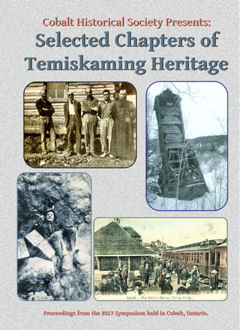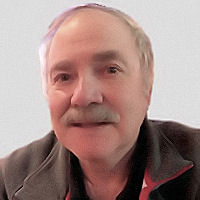
Selected Chapters
of Temiskaming Heritage
2017
Proceedings from the symposium held June 3, 2017 featuring selected pieces of Temiskaming heritage. Five presenters gave unique presentations that have been collected for this book.
ISBN: 978-1-927541-84-5 | WMPub#7931 | 8½" x 11;"
64 pages; 82 pictures; trade paperback | $15.00

Disruptive Visualities: Reading Photographs From The Early Cobalt Mining Camp by Siobhan Angus
This examination of how the historical photographs of Cobalt be used as a lens through which we understand contemporary discussions about sustainability, climate change, and resource extraction and recover histories and experiences that have been forgotten.

The Challenge of Researching the Life of Stephen Lafricain by Bruce W. Taylor
Finding genealogical data on the Stephen Lafricain during the early years of his life, and on his service during the U.S. Civil War was an almost impossible task. Remote locations, lack of church and government records, obscure records in both French and English, and failing memory, are some of the impediments to filling out Lafricain's life story. This paper will explain how some of these challenges were addressed over the past fifteen years.

New Technology for Heritage: A Case Study by Norm Hawriko
This paper briefly discusses the historical development of the Cobalt Townsite Mine, a once prominent silver mine. The historical context will provide a basic understanding of how computer digital 3D modeling can bring history back to life and make it accessible to a wide audience.

Archaeological Sites in the Cobalt Mining District National by John Pollock
There is an increased concern regarding archaeological and heritage sites. Fortunately an preliminary archaeological site inventory was undertaken in 2005-2006 that can provide a basis for management of the more significant sites. This presentation is based entirely on the above 2005-2006 project undertaken for the Town of Cobalt's Historic Mining Camp Project.

The Darby Mine, Thomas Edison's Latchford Venture by George Lefebvre
Edison was after a source of cobalt as he had developed a storage battery that used cobalt as its power source. This battery was for use in electric-powered automobiles which were very popular early in the 20th century. In May 1905, Edison sent his brother-in-law, J. V. Miller north to the Cobalt Camp in search of a reliable source and supply for cobalt, and opened the mine near Latchford.
